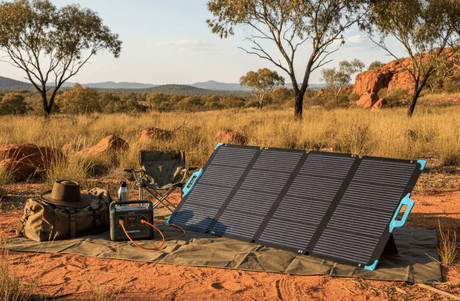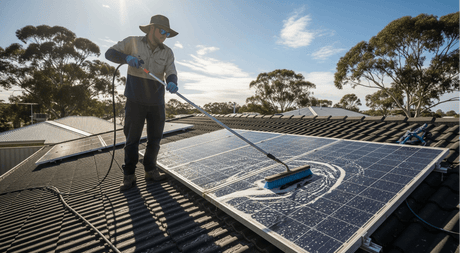A 3000-watt inverter is an almost essential component of any off-grid solar energy system. This inverter will take the direct current (DC) energy that is produced by your solar panels and convert it into alternating current (AC) energy. This AC power is what your appliances need to function.
The five most popular use cases for a 3000-watt inverter include:
- Off-grid RV or tiny home solar systems
- Home or business backup power
- Off-grid electricity for a mobile business or office
- Utilizing camping equipment off-grid
- Offsetting your energy use on-grid with small solar panel kits
For these purposes, your 3000-watt inverter should be a pure sine wave power inverter, which will produce clean, reliable electricity without the fear of interference. Pure sine wave power inverters power household appliances with minimal distortion, so you won’t have to worry about surges or disruptions. They also have ground-fault circuit interrupter (GFCI) protection.
It’s vital to note that certain appliances require pure sine wave power inverters to run, including newer computers and televisions, laserjet printers, and medical equipment, such as CPAP machines.
How Many Batteries Do I Need to Power a 3000W Inverter?
Because a 3000-watt inverter converts solar energy into usable AC power, you will also need a place to store the converted energy. This storage is where 12V lithium battery banks come into play.
For a 3000-watt inverter, the number of batteries you need depends on their amperes per hour. For example, the average car battery has a 50Ah rating. If the battery banks you want to purchase are also 50Ah, you will need six of them for a 3000-watt inverter. If your batteries are rated 100Ah, you would only need three, and with 170Ah rated batteries, only two would be required.
Remember, the data above is for 12V applications only.
What Size Cable Do I Need for a 3000-Watt Inverter?
The best option for a 3000-watt inverter cable is a 1/0 AWG (American Wire Gauge) battery cable. These cables can easily manage 300 amps for every eight feet of cable. It’s always a good idea to use the shortest length of cable possible. A 1/0 AWG cable is a little over half an inch in diameter and has either a copper cable lug or battery terminal on its ends.
Make sure that you don’t confuse a 1/0 AWG battery cable with a 1 AWG battery cable. A 1 AWG battery cable is slightly smaller than a 1/0 AWG battery cable, and you may run into compatibility issues with your 3000-watt inverter.
What Will a 3000W Inverter Run?
While a 3000-watt inverter can produce up to 3000 watts, as the name suggests, it’s best to figure that it can safely and securely run around 2500 watts at any given time. That way, if your system needs a bit of breathing room to avoid an overload when multiple appliances turn on at once, you won’t have to worry about a shortage.
Most solar panel kits that are connected to a 3000-watt inverter can run several devices at once. For example, you can expect the inverter to provide AC power to your refrigerator, microwave, coffee machine, and some lights, along with charging your cell phone and laptop as needed.
You’ll want to be more aware of what’s already running when you decide to use high-energy appliances like hairdryers, printers, toaster ovens, and vacuum cleaners to avoid any surges and shutdowns.
Here’s a quick breakdown of some popular appliances by watt usage:
- Refrigerator: 350 - 780 watts
- Microwave: 1500 - 2000 watts
- Coffee machine: 800 - 1200 watts
- Fluorescent light bulb: 25 watts
- Incandescent light bulb: 100 watts
- Cell phone: 50 watts
- Laptop: 25 -150 watts
- Ceiling fan: 75 - 120 watts
- Hairdryer: 900 - 1600 watts
- Laser printer: 850 - 1300 watts
- Toaster oven: 1500 watts
- Vacuum: 1225 - 1500 watts
If you’re interested in determining how many watts your home, RV, tiny house, or cabin uses regularly and what that means for your solar panel system of choice, check out Renogy’s solar panel calculator.
How Do You Use a 3000-Watt Inverter?
As mentioned previously, a 3000-watt inverter is necessary when you’re converting DC power to AC power. For off-grid solar systems, an inverter is required. For home solar panel kits that are connected to the grid, you may not technically need an inverter, but in many cases, it’s still a good idea to have one, as it will allow you to store energy for later use, including during a power outage.
To use your 3000-watt inverter, you will need to hard-wire it to your battery bank using your 1/0 AWG battery cable. It’s also wise to place an overcurrent protection device, like a circuit breaker or fuse, between the 3000-watt inverter and the battery bank. You’ll need to put a DC safety disconnect between the two components for an off-grid system.
An AC safety disconnect is necessary for all systems, as well. Both the AC and DC safety disconnects are required to prevent electrical fires and to provide safety during troubleshooting and maintenance activities.
When you’ll be installing a 3000-watt inverter with an on-grid solar panel system, the best place to mount it is usually the garage. Not only is this area cool and shaded, which will add to your inverter’s lifespan, but it’s also usually the closest place to the meter. Being as close to the meter as possible helps to maintain high efficiency and avoid voltage drops.
For an off-grid system, such as an RV or tiny home, you will want to have your 3000-watt inverter and batteries safely installed in a well-ventilated area that’s far away from other large devices. Remember that the weight of the inverter, along with the batteries, can add up quickly.
Final Notes
Any solar panel system you intend to use regularly and reliably needs an inverter. In most cases, a 3000-watt inverter is the ideal size to provide enough AC power for your appliances if you are off-grid. It also helps to store energy safely in battery banks if you are on-grid. A worthy 3000-watt inverter should also include proper safety features and a remote control for easy use.








![What Is a DC to DC Battery Charger [Comprehensive Guide]](http://au.renogy.com/cdn/shop/articles/IMG_3829_bd86de74-31d6-49fd-b9d5-265bb723091d.jpg?v=1757582605&width=460)


